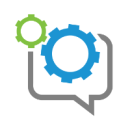
We’ve all been to a terrible meeting before. Whether it ran an hour over schedule or contained information that could have easily been distilled in an email, pointless meetings are the bane of many professionals’ work-lives.
Thankfully, a number of tech companies are tired of the traditional methods for hosting meetings and are striving to come up with more creative approaches. As many startups are learning, meetings that are thoughtfully crafted usually lead to relationship-building and highly educational experiences that teams love. Here, we caught up with three Boston tech companies to see how their teams — from engineering to expert services — are designing meetings well worth attending.

Responses from TJ Ewing, Chief People Officer of LogMeIn
Team: All Hands
How often do you have team meetings?
At LogMeIn we are all about constant collaboration. This can be the typical scheduled out 30-minute meeting in a conference room or ad hoc. While water cooler or hallway chats will always happen, we have seen a shift in the way people meet thanks in large part to the availability of technology like join.me. We aren’t always working right next to the person we collaborate with most, but with tools like join.me, distance doesn’t have to be a barrier to instantly meet. As a growing company with people and offices all over the world, we also use this technology to get everyone together for a monthly, global “All Hands Update.” It’s during these meetings that our execs provide updates on various aspects of the biz, introduce new hires, and get feedback from employees.
What are the key components of a successful meeting?
A successful meeting will have the right agenda, the right people, a defined output/goal and the right tools to get that goal accomplished.
How many people attend?
At LogMeIn we have meetings of all sizes. Meetings range from one on one, internal team meetings, external calls with clients and prospects, to large company-wide (1,000+) online meetings. You can pick and choose which meeting features make the most sense for that meeting. A one on one with your boss on the other side of the country should probably include video so you can pick up on verbal and nonverbal cues, but a meeting with the entire London office may only call for voice and screen sharing.
What was a challenge you faced in getting these team meetings going? How did you overcome it?
There’s a variety of obstacles in getting remote teams together – physical locations, time differences, etc. That’s why in 2010 we developed our own online meeting tool, join.me, to simplify the way people meet and collaborate. Over the years we have added new elements to join.me that we discovered firsthand were necessary when meeting with colleagues and teammates from all over the world. We started as a screen sharing and audio conferencing tool that evolved into a video conferencing, chat and mobile optimized platform. Of course not everyone is going to go out and create their own meeting tool, but they can invest in the right technologies to help make their teams as efficient and collaborative they can be – no matter where they’re physically located.
What makes the meetings special?
There’s something inspiring about regularly getting all employees together and hearing updates directly from our CEO. Transparency is very important here and I think people appreciate being updated on company strategy, performance and goals. There are a multitude of ways that people communicate these days: Email, chat, text, etc., but nothing can replace face to face interaction. And with today’s available technology, you can have a video meeting as easily as meeting with people in the same room, while still getting the benefits of that personal face-to-face connection.
What makes your team's culture unique?
Our culture is rooted in the company’s core values of delivering great products, enabling employee development, being transparent, collaboration, supporting our local community and having fun. We provide a unique corporate culture that fosters a friendly and personal atmosphere while presenting employees with a professionally challenging and intellectually stimulating day-to-day experience. Not only do we encourage employees to collaborate with creative, energetic and smart people, we make sure they have the tools and technology available to them to do so from wherever they are.

Responses from Greg Hinkle, co-founder and CTO of Evergage
Team: Engineering
Evergage’s engineering team has developed frameworks for their meetings that make the most out of team members’ time and ensure that everyone feels included and in the know. We try to avoid having too many meetings to avoid interrupting valuable work time. The engineering team hosts a variety of team meetings that are held at different cadences.
How often do you have team meetings? What are the key components?
Stand up meetings are conducted on a daily basis. They have a time limit of 15 minutes but are usually completed in five to 10 minutes. As in most daily meetings (we call them “scrums”), team members discuss what they did the day before and what they are focusing on that day.
Another component of the stand up meeting is a discussion of blocking issues — what’s holding you back from accomplishing your tasks or projects. These are raised infrequently as team members are expected to tackle such issues as soon as they arise. We’ve developed a culture where people bring up blocking issues in the moment, moving past the traditional “best-practice” and implementing a “better-practice" to fit our needs. As a whole, the team is really focused on minimizing the length of feedback cycles and tries to eliminate anything that delays action. The meetings flow smoothly and end on time in large part thanks to a simple agenda.
In every stand up meeting, the last minute is dedicated to a statement from leadership, team updates (such as important news from a board meeting), upcoming company announcements or highlights of a customer call. This part of the meeting gives team members context for how the work they’re doing aligns with corporate goals and successes, and for understanding the overall direction of the company.
In addition to the daily meetings, Evergage Engineering also has a weekly “super scrum” on Fridays where each team lead provides an update on how the week went. These meetings are usually just five minutes long and set the tone for the whole team for the upcoming week.
The rest of the team meetings tend to be scheduled on an as-needed basis. For example, a kick-off meeting takes place when the team starts development of a major new feature.
How many people usually attend?
Four to seven people. In the past, we had a single daily stand up meeting for all of engineering. As the company grew, the meetings split up into multiple, concurrent team meetings. Each team now has their own stand up in different rooms since meetings with over 15 engineers ran the risk of running too long and getting off track.
What was a challenge you faced in getting these team meetings going? How did you overcome it?
The engineering team includes members who work in the office, as well as those who work remotely so we incorporated video conferencing as part of the meeting to keep everyone connected beyond email and internal chat. Making this a reality was a bit of a challenge as video conferencing didn’t come without its own technical difficulties, and we had to take into consideration members’ geographic locations. To ensure everyone can join the daily meeting, we hold it right before noon (Eastern Time) so team members on Pacific Time can participate during normal work hours.
What makes the meetings special? What makes your team's culture special?
The meeting structure reflects how the Evergage engineering team follows the principles of agility, but not in a dogmatic way. The team makes meeting process adjustments and improvements on-the-fly, always mindful of the needs and priorities of the team, as well as the company at large. We’re not afraid to throw away ideas that don’t work and to evolve the meeting structure so stand up meetings continue to be effective and motivational for everyone.
Originally, the daily meeting ended with the engineers doing a series of push-ups. This started out as the team making fun of meetings and their mandatory team cheers. It wasn’t meant to be a permanent component of the meeting. But, the engineers have come to enjoy it and pushups are now part of the tradition – although they’re completely optional (some opt out, some do other exercises) – and now include a few members from other departments.

Responses from Donna Williams, Vice President at Mendix
Team: Expert Services
Team Expert Services is responsible for helping our customers build applications and utilize the full capabilities of our platform. The team also advises customers on how to enable their internal teams to build a center of app development excellence with Mendix.
How often do you have team meetings?
Weekly. We call it "Beer and Learn.”
What are the key components?
Everyone briefly shares what they worked on this week, what is happening next week and if there was anything unique or any blocks they encountered. The second key component is that someone from the team shares something they've been working on or learned in order to mentor the rest of the team. This could be a demo of an app they built or an app component that utilizes internet of things (IoT) or machine learning. We want to encourage each team member to not only take the time to learn something new each week but also to share the learning with the rest of the team. This aspect of the meeting instills the importance that improving individually subsequently benefits and strengthens the team's collective expertise.
How many people usually attend?
The entire team (10 people).
What was a challenge you faced in getting these team meetings going? How did you overcome it?
The challenge wasn't getting the weekly meetings going, rather we had requests from other teams in the office to attend to learn about the app development that our customers are working on. Given the interest, we now regularly share highlights of customer projects with the full team to educate people in different departments — HR, marketing, sales — about the capabilities and variety of applications being developed on the Mendix platform.
What makes the meetings special?
The focus of the meeting is learning. It isn’t top down but peer-to-peer. We have it Friday afternoon as most of the team is traveling during the week. It is a great opportunity for everyone to get back together and connect and learn something new each week. It also helps that we have a beer fridge and can have the meeting in a more relaxed setting.
What makes your team's culture special?
The team culture is special because we have the right people and we've focused on fostering culture in addition to building technical skills. I've never been part of a team where so many tell me they're happy to be here. The great people on our team are always proactively offering to help one another out in addition to helping out other teams at the company in any way they can. As cheesy as it sounds, the team has become something more than just a collection of coworkers.
Photos via social media
Does your tech company craft great meetings? Let us know or tweet us @BuiltInBOS









